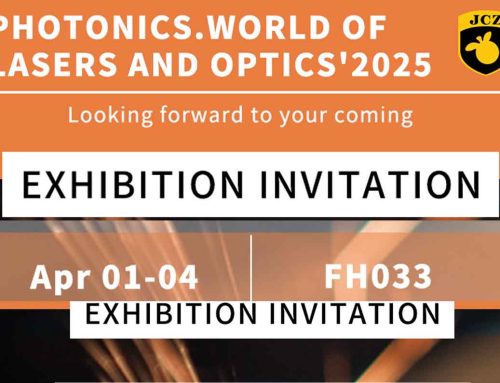Today, lasers are used in devices we encounter daily, such as CD and DVD players at home, laser printers in offices, and barcode scanners in malls. People use lasers for vision correction in near-sighted treatments and for sending emails and browsing videos through fiber-optic networks. Whether we realize it or not, we all use lasers every day, but how many people truly understand what lasers are and how they work?
Laser is a type of light that does not exist naturally but is emitted due to stimulation. It has characteristics such as high directionality, brightness, monochromaticity, and coherence.

The Mechanism of Laser Generation
The mechanism behind laser generation can be traced back to 1917 when Einstein proposed a hypothesis in his explanation of the blackbody radiation law. He suggested that the absorption and emission of light occur through three basic processes: stimulated absorption, stimulated emission, and spontaneous emission. It is well known that the emission of light from any light source is related to the motion state of the particles inside the material. When particles (atoms, molecules, or ions) at low energy levels absorb external energy (light) with an appropriate frequency, they are excited to the corresponding higher energy levels (stimulated absorption), after which they attempt to transition to lower energy levels by releasing excess energy in the form of photons.
If light is emitted spontaneously without external photon interaction (spontaneous emission), the released light is considered ordinary light (like from lamps or neon signs), which is characterized by inconsistency in frequency, direction, and timing.
However, if light is emitted due to the direct action of external photons as the particle transitions from a high to a low energy level (stimulated emission), the released photons are identical to the incoming photons in frequency, phase, and direction. This means that the incoming light has been amplified, a process we refer to as light amplification.

To generate laser light, three conditions must be met: population inversion, a resonant cavity for feedback, and a threshold condition. By stimulating absorption, the number of particles in the higher energy state exceeds the number in the lower energy state (population inversion). There must also be reflective surfaces at both ends of the active region, creating a resonant cavity. This ensures that the gain (energy added to the system) exceeds the loss (energy scattered or absorbed), meaning that in a given period, the number of new photons created is greater than the photons lost. Only by meeting these three conditions can laser generation be achieved.
Laser Characteristics
Lasers are often regarded as “magical light” because of their four unique properties that ordinary light does not possess.

- High Directionality
Ordinary light sources (sunlight, incandescent lamps, or fluorescent lights) emit light in all directions, whereas lasers emit light in a narrow cone, usually within an angle of less than a few milliradians. This makes the brightness in the direction of emission millions of times higher. A laser beam remains narrow over long distances. For example, if aimed at the moon (approximately 384,400 km away), the beam’s diameter would expand by less than 2 km, whereas ordinary spotlights would disperse by several meters over just a few kilometers. - High Brightness
Lasers are the brightest light sources known today. Only the intense flash of a hydrogen bomb explosion can compare with them. The brightness of sunlight is about 1.865×10⁹ cd/m², whereas a high-power laser can be several orders of magnitude brighter than sunlight. While the total energy of a laser may not be large, its energy is highly concentrated, which makes it possible to generate high pressures and temperatures, reaching millions of degrees in a tiny focal point. This feature is used in applications such as laser drilling, cutting, welding, and laser surgery. - Good Monochromaticity
Light is an electromagnetic wave. Its color depends on its wavelength. Ordinary light sources emit a mix of wavelengths, representing a spectrum of colors. Sunlight contains not only visible colors (red, orange, yellow, green, blue, indigo, violet) but also infrared and ultraviolet light.In contrast, a laser emits light that is concentrated within a very narrow wavelength range. For example, the wavelength of a helium-neon (HeNe) laser is 632.8 nm, with a variation of less than one-millionth of a nanometer. The excellent monochromaticity of lasers is particularly beneficial for precision instruments and chemical reactions in scientific experiments. - Good Coherence
Interference is a property of wave phenomena. Due to its high directionality and monochromaticity, laser light is highly coherent. This feature makes holography possible.
Types of Lasers
To achieve laser light, a population inversion must be achieved in the light source. This is the necessary condition for light amplification. To accomplish this, external light stimulates a large number of low-energy particles to transition to higher energy states. This process is called “excitation.”
A laser is a device that generates laser light by stimulating particles in a light source to undergo a stimulated emission transition, achieving population inversion, and then amplifying the light through stimulated radiation. Though there are many types of lasers, all operate by exciting particles and generating laser light.

Lasers can be classified in several ways. The most common classification includes solid-state lasers, gas lasers, liquid dye lasers, semiconductor lasers, and fiber lasers. Solid-state lasers have media such as ruby rods or other solid crystal materials, and these are pumped with flashlamps to energize atoms within the crystal. Gas lasers, such as the CO₂ laser, use inert gases or CO₂ as the medium and produce continuous light. Liquid dye lasers use organic dye molecules dissolved in a solvent, offering the advantage of a wider tuning range compared to solid and gas lasers.
Laser Applications
Laser technology, which explores the various methods of generating lasers and harnessing their properties, has had a profound impact across many sectors.
- Laser in Information Technology
Semiconductor lasers and fiber amplifiers are key technologies in fiber-optic communication. Lasers are used as information carriers because their monochromaticity and coherence are excellent, and the frequency of light waves is many times higher than microwaves. Fiber-optic communication, based on laser light, offers better communication quality, resistance to interference, higher security, and significantly higher capacity than microwave communication.Additionally, lasers have revolutionized information storage, such as in CDs, where the storage density is vastly greater than traditional methods. Laser printers, laser fax machines, laser reprographics, and laser TVs are all widely used today.
- Laser in Holography
Light as a wave phenomenon can be characterized by wavelength, amplitude, and phase. Traditional photographic methods only record wavelength and amplitude, but holography, using laser light, records both amplitude and phase, thus enabling the three-dimensional reproduction of objects. - Laser in Medicine
Laser technology in medicine is categorized into diagnostic and therapeutic applications. Lasers can penetrate deeper into tissues and provide accurate diagnostic information. As a therapeutic tool, lasers are used for procedures such as eye surgeries, dental procedures, and even cancer treatments.
- Laser in Manufacturing
Laser processing involves using a highly concentrated laser beam to melt or vaporize materials for cutting, welding, or engraving. It is widely used in precision industries, including aerospace, automotive, and medical devices.
- Laser in Precision Measurement
Laser’s monochromaticity, coherence, and directionality make it ideal for high-precision measurement applications, such as laser rangefinders and laser radar (LiDAR), which are used for mapping, detecting, and measuring distances with high accuracy.
Laser technology is one of the most significant inventions of the 20th century, and its applications are continually evolving. From industrial applications to medical treatments, lasers are transforming industries and shaping our modern world.
Company Introduction

Beijing JCZ Technology Co., Ltd. (Stock Code: 688291) was established in 2004 and focuses on the research and development of control software, systems, and components in the field of laser industrial processing. It is recognized by the Ministry of Industry and Information Technology as a specialized and innovative “The Rising Star Award” enterprise, a specialized and innovative “The Rising Star Award” enterprise in Beijing, a high-tech enterprise recognized by the Beijing Municipal Science and Technology Commission, and a partner unit in Fengtai District’s “Doubling Catch-up and Cooperative Development” initiative.
In the future, JCZ will continue to innovate technologically and strive to build a “Beam Delivery & Control” technology platform, providing customers with “Integrated Drive and Control” products and comprehensive solutions, delivering high-quality products and services to system integrators and users, and becoming a competitive and influential “Beam Delivery & Control Expert.”
由用户投稿整理稿件发布,不代表本站观点及观点,进行交流学习之用,如涉及版权等问题,请随时联系我们(yangmei@bjjcz.com),我们将在第一时间给予处理。






